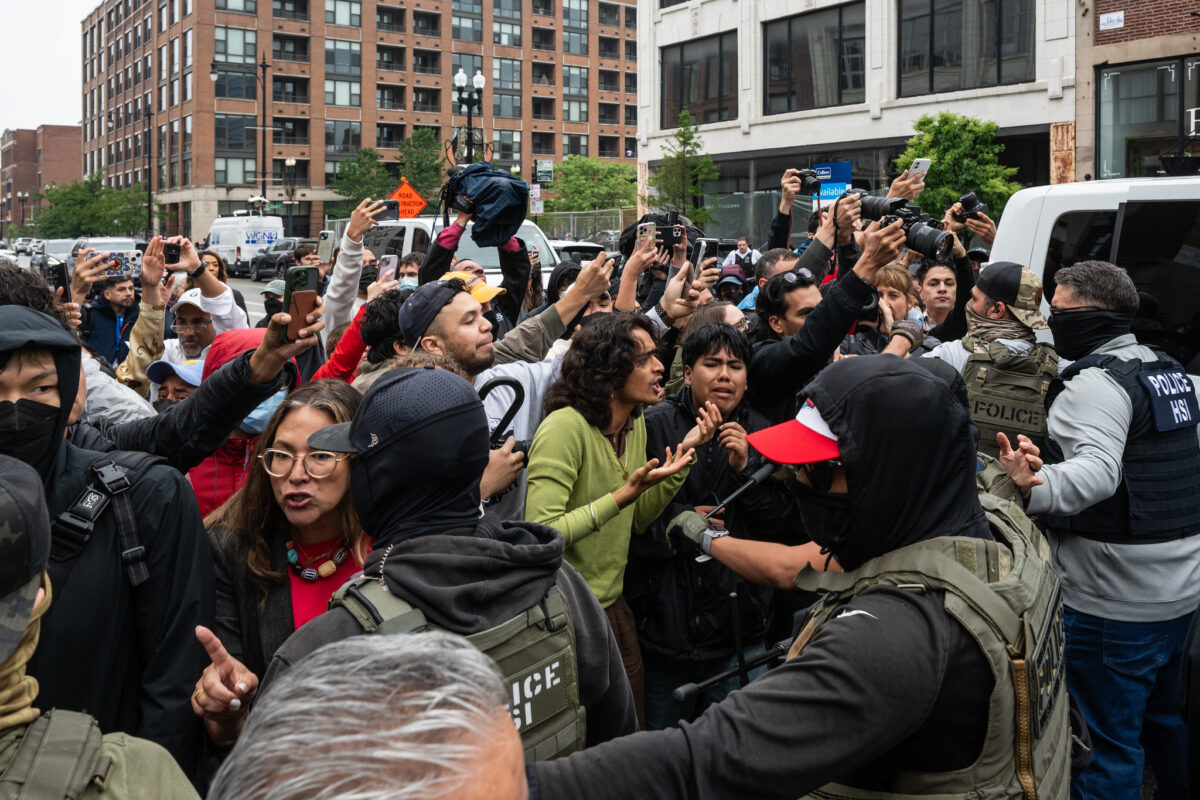Over the past couple weeks, efforts to defend communities across the country from Immigration and Customs Enforcement (ICE) agents have morphed into mass protests. Sparked by ICE raids on Home Depots and clothing wholesalers in Los Angeles on June 6 and 7, which led to demonstrations in that city that have spread to Chicago, New York, Dallas, and other cities, people have tried various methods at preventing or slowing down ICE activity, from occupying highways to blocking ICE vehicles and surrounding detainment facilities. In Los Angeles, municipal police assisted ICE by shepherding their officers and dispersing crowds, often using tear gas and rubber bullets. The scenes reminded many of the uprisings that occurred five years ago in the wake of George Floyd’s murder.
On June 7, President Trump ordered 2,000 National Guardsmen to deploy in Los Angeles to suppress the protests, despite the objections of Los Angeles mayor Karen Bass and California governor Gavin Newsom. Two days later, the Trump administration also ordered 700 Marines to head to the city. As troops outfitted in combat gear and assault rifles filed into the city, Trump and administration officials said they were there to “liberate” Los Angeles from “the Migrant Invasion,” calling protesters “foreign enemies.” On June 16, Trump reaffirmed that carrying out his mass deportation agenda was the top priority of his administration and that he was preparing to send the Guard and military into more sanctuary cities, such as Chicago.
This escalation by the Trump administration has rightly sparked fears about an increasingly authoritarian response to protest and the unprecedented use of military force against American civilians. Trump might be testing out how far he can go with deploying the military to serve his domestic aims; today it’s assisting ICE operations against immigrants, tomorrow it might be instituting martial law and election interference. A federal judge ruled on June 12 that Trump’s order was illegal, going against the 10th Amendment, and control of the National Guard in Los Angeles should revert back to California; later that day, that decision had been blocked by the 9th U.S. Circuit Court of Appeals.
In Chicago, people have likewise attempted to block ICE vehicles and operations at offices in the Loop while continuing to lookout for ICE operations through the city and suburbs and spreading the word through local channels. Like in Los Angeles, municipal police—CPD—have apparently coordinated with ICE by protecting their officers and facilitating their operations by holding back or dispersing protesters. These actions raise questions about whether CPD violated the TRUST Act, which prohibits municipal and state police in Illinois from cooperating with federal immigration authorities like ICE. But they also raise questions about the limits of such laws. As mayor Bass said about the LAPD response, “When one branch of law enforcement says they need help, another branch of law enforcement is obligated to respond.”
In this era of increasing authoritarian oppression and resistance, organizers leading the way have emphasized the need to build mass organized political movements. That can start small and local; it might look like participating in a mutual aid network near you, or volunteering in an ICE watch group, or even getting to know your neighbors so that if they—or you—need help, you all have more people to call on.

